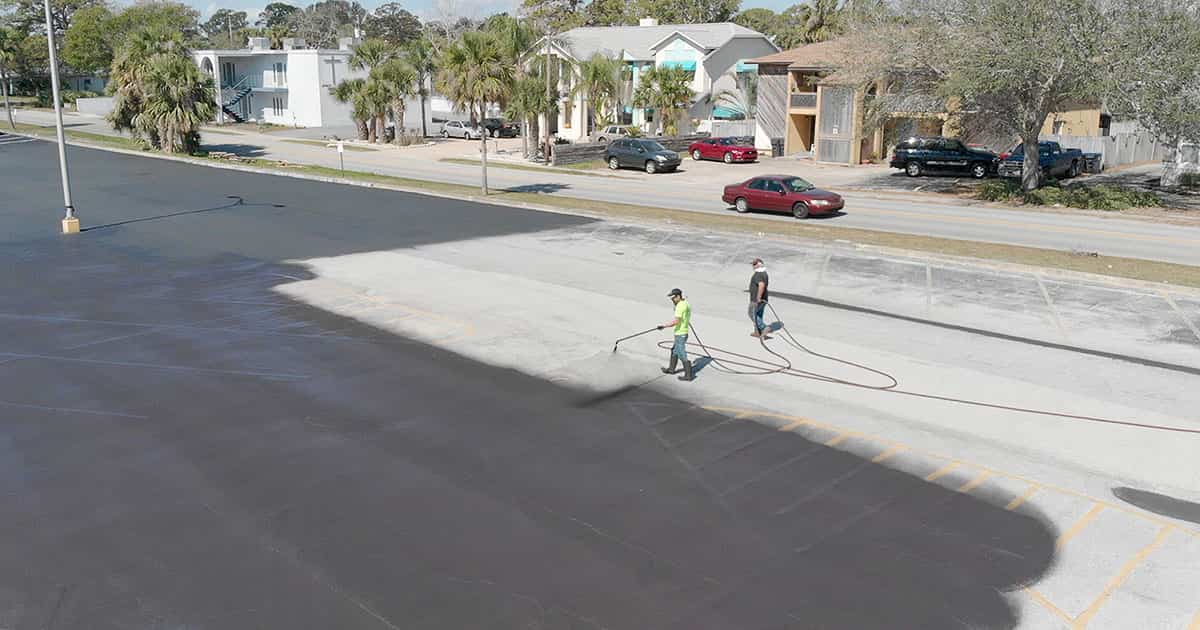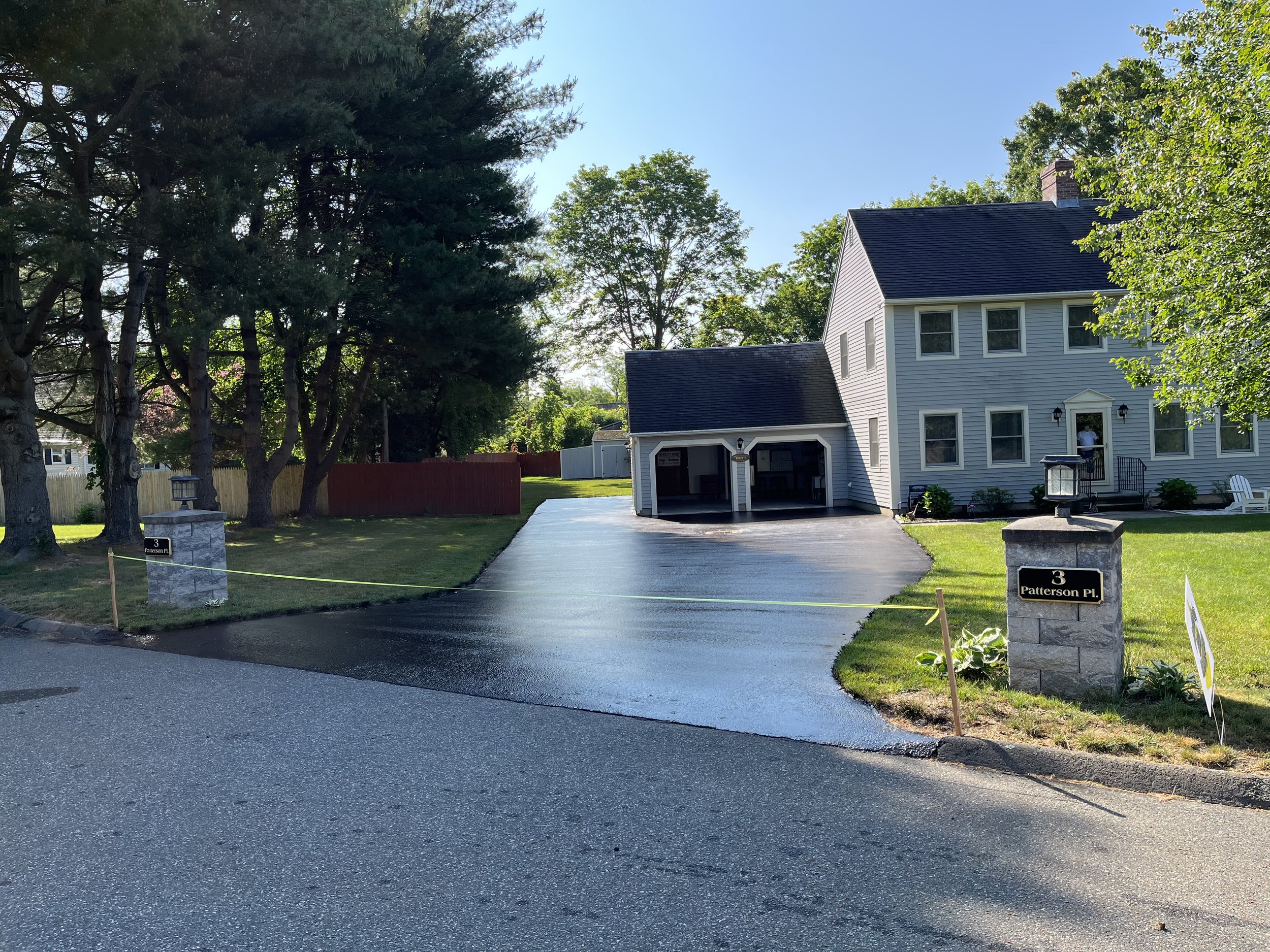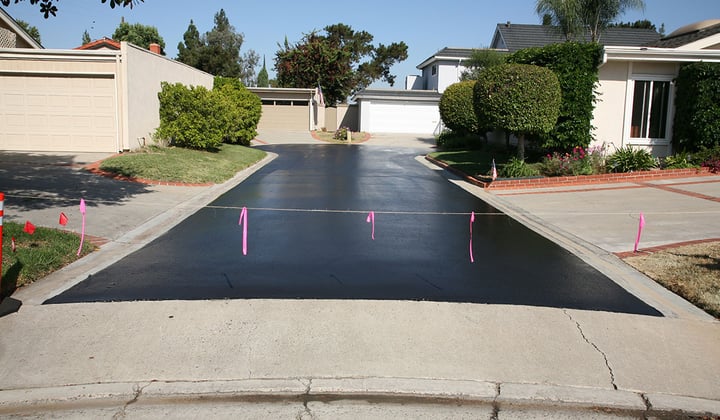Maximize Resilience: Hot Mix Asphalt Sealing for Angled Parking Frameworks
Maximize Resilience: Hot Mix Asphalt Sealing for Angled Parking Frameworks
Blog Article
Hot Mix Asphalt: A Sustainable Solution for Sidewalk
Warm Mix Asphalt (HMA) has actually become a leading lasting selection for pavement services, using a myriad of innovative innovations and ecological benefits. Its ability to minimize and reuse products power usage offers a compelling situation for its adoption in roadway construction projects. In addition, the long-lasting performance and longevity of HMA make it a recommended alternative for framework growth. As the need for environment-friendly building practices grows, discovering the subtleties of HMA's sustainability can offer valuable understandings into the future of sidewalk options.
Ecological Benefits of Warm Mix Asphalt

Moreover, Hot Mix Asphalt aids to alleviate city heat island results. Its dark shade takes in sunlight, decreasing the quantity of warmth reflected back right into the atmosphere compared to lighter-colored pavements. This can reduce ambient temperature levels in city locations, lowering the demand for a/c and ultimately lowering energy intake.
Furthermore, Warm Mix Asphalt adds to boosted stormwater management. Its permeable nature enables water to recharge and penetrate the pavement groundwater supplies, reducing runoff and the danger of flooding. These environmental advantages make Hot Mix Asphalt a lasting selection for leading highways and roads.
Energy Effectiveness in HMA Manufacturing
Is energy performance an essential factor in the manufacturing of Warm Mix Asphalt (HMA)? Definitely. Power plays a substantial duty in the production of HMA, influencing both expense and ecological sustainability. One vital facet of energy performance in HMA production is using warm mix asphalt (WMA) modern technologies (commercial parking lot paving). WMA permits the mixing and placement of asphalt at lower temperatures contrasted to typical hot mix asphalt, leading to decreased energy usage during manufacturing. This procedure not just lowers fuel use yet also lowers greenhouse gas discharges, making it an extra ecologically pleasant option.
In addition, advancements in plant innovations have caused even more energy-efficient HMA production processes. Modern plants are developed with attributes like recycled asphalt sidewalk (RAP) handling capacities, effective burner systems, and boosted insulation, all contributing to energy cost savings. By enhancing energy use in HMA manufacturing, the industry can decrease its carbon impact while keeping high-quality pavement materials. Energy efficiency is, consequently, an essential factor to consider in making certain the sustainability of Hot Mix Asphalt manufacturing.
Recyclability of Warm Mix Asphalt
The recyclability of Hot Mix Asphalt (HMA) is a pivotal element of its sustainability and long-lasting environmental influence. HMA is among the most recycled products in the United States, with over 100 view million loads of recovered asphalt pavement (RAP) being reused yearly in brand-new sidewalk construction. Recycling HMA offers numerous environmental benefits, such as lowering the need for virgin products, reducing energy usage during manufacturing, and reducing the quantity of waste sent out to garbage dumps.
The procedure of recycling HMA includes grating the existing sidewalk, squashing it into smaller sized pieces, and mixing it with brand-new accumulation and asphalt binder to produce a recycled mix. On the whole, the recyclability of HMA plays a considerable duty in advertising sustainable practices within the pavement sector.

Long-Term Efficiency of HMA
Asphalt pavements demonstrate longevity and strength over an extensive period, reflecting the lasting efficiency of Warm Mix Asphalt (HMA) Additionally, innovations in HMA modern technology, such as the use of polymer-modified binders and warm mix asphalt, have actually further enhanced the sturdiness and durability of HMA pavements. By focusing on quality construction and upkeep techniques, HMA proceeds to confirm itself as a affordable and lasting option for resilient sidewalk framework.

HMA: Sturdiness and Sustainability
Showing both toughness and sustainability, Warm Mix Asphalt (HMA) has actually become a cornerstone in the building and construction of lasting sidewalk frameworks - commercial parking lot paving. HMA's toughness stems from its capability to withstand hefty loads, harsh weather, and high website traffic volumes, making it a reputable selection for highways, freeways, and airport terminal paths. The make-up of HMA, which normally consists of accumulations, binder, and filler, plays a vital role in improving its longevity and resistance to deterioration
Moreover, HMA's sustainability depends on its recyclability and energy-efficient production process. The capacity to recycle redeemed asphalt pavement (RAP) in new HMA blends lowers the demand for virgin you could try here products and reduces the ecological effect of sidewalk building and upkeep. Furthermore, the power efficiency of creating HMA hinges on its reduced blending temperatures contrasted to other pavement products, causing decreased energy intake and greenhouse gas emissions.
Final Thought
In verdict, warm mix asphalt (HMA) provides a lasting option for sidewalk with its eco pleasant features. HMA's recyclability, power effectiveness in manufacturing, and long-lasting durability make it an environment-friendly selection for road construction. By saving natural deposits, minimizing waste, and lowering greenhouse gas emissions, HMA plays an essential role in advertising sustainability in facilities advancement. Its capability to mitigate city warm island effects better underscores its relevance in creating ecologically aware and resilient sidewalk systems.
HMA is one of the most recycled products in the United States, with over 100 million loads of recovered asphalt sidewalk (RAP) being recycled annually in new pavement building.The process of reusing HMA involves grating the existing pavement, squashing it right into smaller pieces, and mixing it with brand-new aggregate and asphalt binder to produce a recycled mix.Asphalt sidewalks demonstrate longevity and resilience over an extended period, reflecting the lasting efficiency of Learn More Here Hot Mix Asphalt (HMA) Furthermore, improvements in HMA modern technology, such as the use of polymer-modified binders and cozy mix asphalt, have actually better improved the durability and durability of HMA pavements. The capacity to recycle recovered asphalt pavement (RAP) in new HMA combinations lowers the demand for virgin products and minimizes the environmental influence of sidewalk building and construction and maintenance.
Report this page